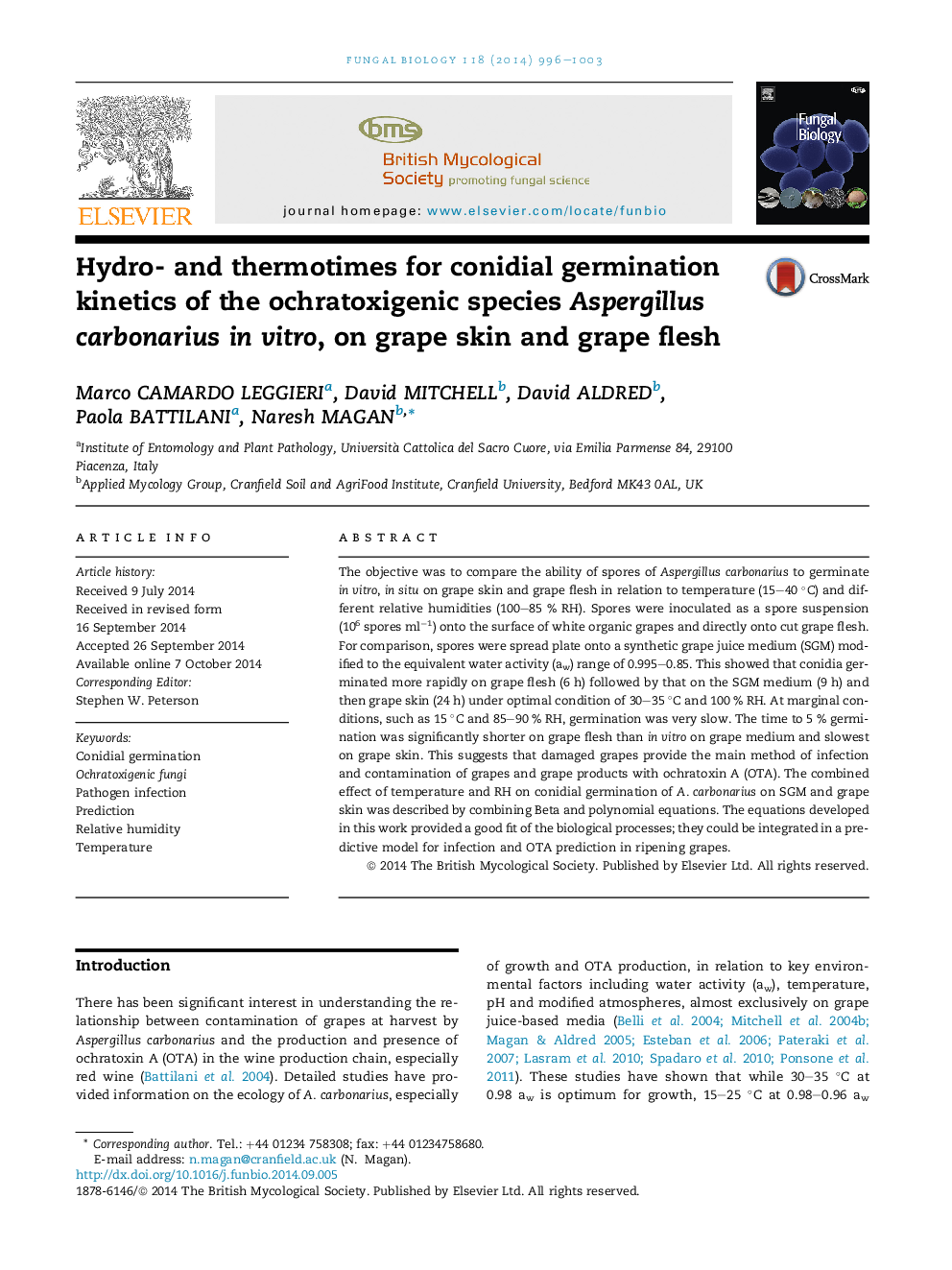| Article ID | Journal | Published Year | Pages | File Type |
|---|---|---|---|---|
| 4356950 | Fungal Biology | 2014 | 8 Pages |
Abstract
The objective was to compare the ability of spores of Aspergillus carbonarius to germinate in vitro, in situ on grape skin and grape flesh in relation to temperature (15-40 °C) and different relative humidities (100-85 % RH). Spores were inoculated as a spore suspension (106 spores mlâ1) onto the surface of white organic grapes and directly onto cut grape flesh. For comparison, spores were spread plate onto a synthetic grape juice medium (SGM) modified to the equivalent water activity (aw) range of 0.995-0.85. This showed that conidia germinated more rapidly on grape flesh (6 h) followed by that on the SGM medium (9 h) and then grape skin (24 h) under optimal condition of 30-35 °C and 100 % RH. At marginal conditions, such as 15 °C and 85-90 % RH, germination was very slow. The time to 5 % germination was significantly shorter on grape flesh than in vitro on grape medium and slowest on grape skin. This suggests that damaged grapes provide the main method of infection and contamination of grapes and grape products with ochratoxin A (OTA). The combined effect of temperature and RH on conidial germination of A. carbonarius on SGM and grape skin was described by combining Beta and polynomial equations. The equations developed in this work provided a good fit of the biological processes; they could be integrated in a predictive model for infection and OTA prediction in ripening grapes.
Keywords
Related Topics
Life Sciences
Agricultural and Biological Sciences
Agricultural and Biological Sciences (General)
Authors
Marco Camardo Leggieri, David Mitchell, David Aldred, Paola Battilani, Naresh Magan,
